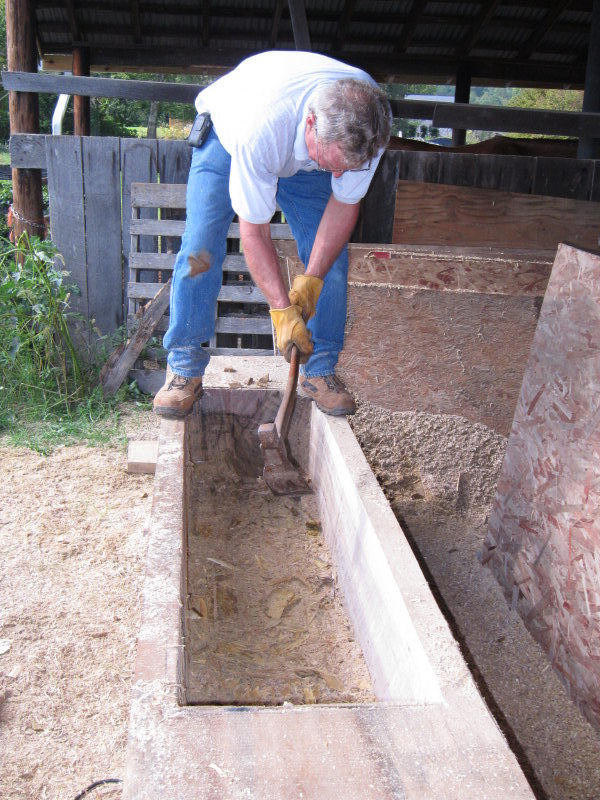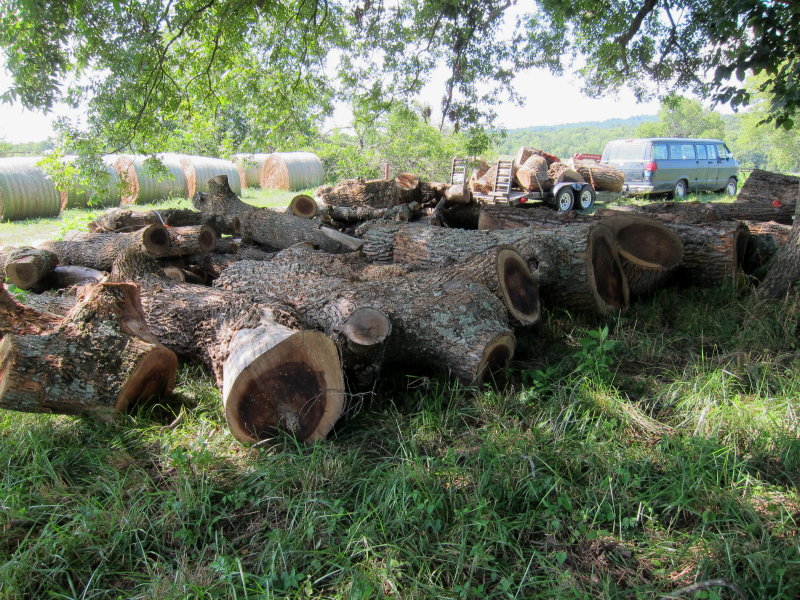The Monticello Tulip Poplar II

The two enormous Tulip Poplars towering
on either side of the lawn portico of Thomas Jefferson’s Monticello
transfixed visitors for decades.
I remember standing in awe under them, gazing at the
impressive girth of the trunks and the massive spread of the
branches above, and noting the supporting cables running throughout.
In 2008 the southwest tree succumbed to old age and had to be
removed for safety reasons, having not leafed out that year.
In June of 2011 the northwest Tulip Poplar was also removed, as it’s
enormous shape leaned towards the house and it was feared to suffer
from the same root disease that had killed the southwest tree.
The two tulip poplars appear to have been sister trees, and they are
greatly missed for the sheltering presence they provided the house
all those years.
The bowls from the N.W. Tulip Poplar show extraordinary density and
character due to the tree’s age, the soil it grew in, and remnants
of lightning rods and cabling throughout.
Below is a short photo essay on this
magnificent tree.

Here is the tree as it leaned towards the house.

As it came down, branches were set to the side allowing access to
the trunk.

The logs were moved to the farm site in Shadwell where Jefferson was
born.

Out in the field they still had massive presence.

Kirk McCauley and I coated all the ends
with wax and then covered them with tarps on
simple frames to reduce the
sun's pounding effect.
I moved the smaller branches out of the sun and under an enormous
hickory tree,
to reduce the checking while allowing them to spalt naturally.

Bob Self, Architectural Conservator, (accompanied by Assistant Curator
Justin Sarafin)
arranged for two of
the big logs to be
sawn up into lumber, and also to create a massive
timber for a salt trough.
Jim Hart brought his
Woodmizer and his expertise to the site.

I took my big Stihl chainsaws to the storage shed to rough cut out
the inside of the trough.

Here is the undercutting method I used to take out the thick slabs

Here I am trimming out the end of the cut.

Here is Bob smoothing the cuts with an adz. A lot of elbow
grease went into this phase.

The finished trough in the smoke house. It began as a 1500 lb
blank and weighs some 750 lbs now.

Back in the field I made a cross cut for Dan Drukenbrod to get a
definitive date.
At this level the tree was sound to the core.

Here is the cross cut section that was sent to Dr. Druckenbrod.

A cross cut below that level was taken to make one large table.
It barely fit in the van.

Then I quartered the base, revealing how high the root rot had run.
The colors were spectacular.

Later I had Jim Hart back to saw up some of the last big branch
pieces.

These yielded wide boards to be used for various projects after air
and then kiln drying.

Here is a sample bowl from near a branch crotch.
The spalting is most spectacular.
The Monticello Tulip
Poplar bowls are sold primarily by the Monticello Museum Shop.
There are two other turners working with the wood. Each piece
is numbered sequentially by the artist,
documented by photograph, and is accompanied by a certification card
from Monticello. Sales have been brisk over the years as
people can appreciate the sense of history they get with these
elegant sections of the tree. You may contact the
Museum Shop
at 434-984-9840
or 1-800-243-1743 to check for availability if you are interested.
For a bit of Jefferson's own thoughts on trees, go to the Monticello
website
http://www.monticello.org/site/house-and-gardens/trees-monticello
